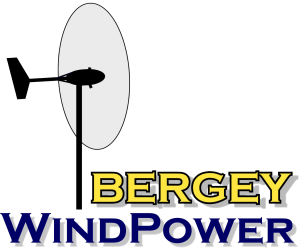Net Metering & Related Utility Issues
What happens when a home wind system produces more energy than the home needs ?
In most states Small Power Producers (the official federal government [FERC] name for home power generators) operate through a double metering system that allows utilities to sell power to the homeowner at retail rates and purchase power from the homeowner at a lower “avoided cost.” This arrangement conforms to PURPA 210 (the governing federal legislation), but has two major drawbacks. First, avoided costs are very difficult to determine and buy-back rates often seem to be discriminatory. A number of rural electric cooperatives in Kansas, for example, charge retail rates from $0.12 – $0.19/kWh (some of the highest rates in the country) and yet have a buy-back rate of only $0.013/kWh, or as little as 7% of the retail price.
Most Public Utility Commissions allow utilities to use average avoided costs instead of the incremental costs referenced in the FERC implementation rules and few provide any accounting for capacity avoidance, line losses and other related savings. There is a definite dampening of the market when customers feel cheated on the buy-back rate.
The second problem with double metering is that for the utilities, it results in significant administrative costs associated with the manual processing of a few special accounts. It may cost a utility $10-$20 to read a second meter and process a monthly check to a SPP, even if the payment is only a few cents. An owner of two 1 kW wind turbines in Oklahoma City, for example, has a collection (he doesn’t cash them) of over sixty checks from Oklahoma Gas & Electric in amounts ranging from $0.02 – $0.37.
What is net metering?
“Net-metering” is a simplified method of metering the energy consumed and produced at a home or business that has its own renewable energy generator, such as a small wind turbine. Under net metering excess electricity produced by the wind turbine will spin the existing home or business electricity meter backwards, effectively banking the electricity until it is needed by the customer. This provides the customer with full retail value for all the electricity produced. Without net metering the excess production is sold to the utility at a much lower price.
Under existing federal law (PURPA, Section 210) utility customers can use the electricity they generate with a wind turbine to supply their own lights and appliances, offsetting electricity they would otherwise have to purchase from the utility at the retail price. But if the customer produces any excess electricity (beyond what is needed to meet the customer’s own needs), the utility purchases that excess electricity at the wholesale or ‘avoided cost’ price, which is much lower than the retail price. The excess energy is metered using an additional meter that must be installed at the customer’s expense. Net metering simplifies this arrangement by allowing the customer to use any excess electricity to offset electricity used at other times during the billing period. In other words, the customer is billed only for the net energy consumed during the billing period.
Why is net metering important?
There are three reasons net metering is important. First, because wind energy is an intermittent resource, customers may not be using power as it is being generated, and net metering allows them to receive full value for the electricity they produce without installing expensive battery storage systems. This is important because it directly affects the economics and pay-back period for the investment. Second, net-metering reduces the installation costs for the customer by eliminating the need for a second energy meter. Third, net metering provides a simple, inexpensive, and easily-administered mechanism for encouraging the use of small-scale wind energy systems, which provide important local, national, and global benefits to the environment and the economy.
What are the benefits and costs of net metering?
Net metering provides a variety of benefits for both utilities and consumers. Utilities benefit by avoiding the administrative and accounting costs of metering and purchasing the small amounts of excess electricity produced by small-scale wind energy facilities. Consumers benefit by getting greater value for some of the electricity they generate and by being able to interconnect with the utility using their existing meter.
The only cost associated with net metering is indirect: the customer is buying less electricity from the utility, which means the utility is collecting less revenue from the customer. That’s because any excess electricity that would have been sold to the utility at the wholesale or ‘avoided cost’ price is instead being used to offset electricity the customer would have purchased at the retail price. In most cases, the revenue loss is comparable to having the customer reducing electricity use by investing in energy efficiency measures, such as compact fluorescent lighting, efficient heating and cooling equipment, or other highly-efficient appliances.
The bill savings for the customer (and corresponding revenue loss to the utility) will depend on a variety of factors, particularly the difference between the ‘avoided cost’ and retail prices and the amount of excess electricity produced. In general, however, the difference will be between $10-40 a month for a 10 kilowatt residential wind energy system.
Moreover, any utility revenue losses associated with net metering are at least partially offset by administrative and accounting savings, which are not included in the above figures. These savings can exceed $25 a month because, absent net metering, utilities have to separately process the accounts of customers with wind turbines and issue the monthly checks. In practice, these checks can be for as little as 5 cents.
Can I really use my existing meter to take advantage of net metering?
The standard kilowatt-hour meter used for most residential and small commercial customers accurately registers the flow of electricity in either direction. This means the ‘netting’ process associated with net metering happens automatically — the meter spins forward (in the normal direction) when the customer needs more electricity than is being produced, and spins backward when the customer is producing more electricity than is needed in the home or building. The meter registers the net amount of energy produced or consumed during the billing period.
What is the current status of net metering?
Currently, 28 states require at least some utilities to offer net metering for small wind systems, although the requirements vary from state to state. Most state net metering rules were enacted by state utility regulators, and these rules apply only to utilities whose rates and services are regulated at the state level. In recent years many states have enacted net metering laws legislatively, including California, Connecticut, Massachusetts, Montana, Nevada, New Hampshire, New Jersey, Oregon, Vermont, Virginia, and Washington. In most of the states with net metering statutes, all utilities are required to offer net metering for small wind systems.

